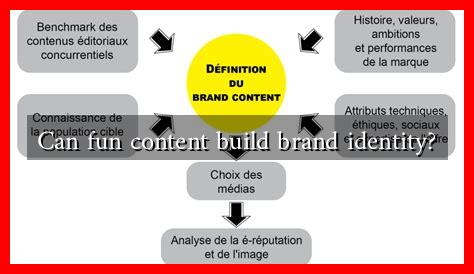-
Table of Contents
Can Fun Content Build Brand Identity?
In today’s fast-paced digital landscape, brands are constantly vying for consumer attention. With the rise of social media and content marketing, the way brands communicate has evolved significantly. One of the most effective strategies that has emerged is the use of fun content. But can this playful approach truly build a strong brand identity? This article explores the relationship between fun content and brand identity, supported by examples, case studies, and statistics.
The Power of Fun Content
Fun content refers to engaging, entertaining, and often humorous material that resonates with audiences. It can take various forms, including memes, videos, quizzes, and interactive posts. The primary goal of fun content is to entertain while subtly promoting a brand’s message. Here are some reasons why fun content is powerful:
- Increased Engagement: Fun content encourages shares, likes, and comments, leading to higher engagement rates.
- Memorability: Humorous or entertaining content is more likely to be remembered by consumers, making it easier for brands to stay top-of-mind.
- Emotional Connection: Fun content can evoke positive emotions, fostering a deeper connection between the brand and its audience.
Building Brand Identity Through Fun Content
Brand identity encompasses the visual elements, messaging, and overall perception of a brand. Fun content can play a crucial role in shaping this identity. Here’s how:
1. Establishing a Unique Voice
Brands that use fun content often develop a distinctive voice that sets them apart from competitors. For instance, the fast-food chain Wendy’s is known for its witty and sometimes sassy social media presence. Their playful banter with customers and competitors alike has helped them cultivate a unique brand identity that resonates with a younger audience.
2. Enhancing Brand Recall
Fun content can significantly enhance brand recall. A study by the Content Marketing Institute found that 70% of consumers prefer to learn about a company through articles rather than ads. When brands create entertaining content, they become more memorable. For example, Dollar Shave Club’s humorous launch video went viral, leading to a significant increase in subscriptions and brand recognition.
3. Fostering Community Engagement
Fun content can create a sense of community among consumers. Brands that encourage user-generated content, such as challenges or contests, can foster a loyal following. For instance, Coca-Cola’s “Share a Coke” campaign invited consumers to find bottles with their names on them, leading to a surge in social media engagement and brand loyalty.
Case Studies: Brands That Nailed Fun Content
Several brands have successfully leveraged fun content to build their identities:
- Old Spice: The “Old Spice Guy” campaign transformed the brand’s image from outdated to humorous and relatable, resulting in a 125% increase in sales.
- GoPro: By encouraging users to share their adventurous videos, GoPro has built a community of enthusiasts, reinforcing its identity as an adventure brand.
- BuzzFeed: Known for its quizzes and listicles, BuzzFeed has created a brand identity centered around fun and shareable content, attracting millions of users.
Statistics That Support Fun Content
Several statistics highlight the effectiveness of fun content in building brand identity:
- According to a study by Statista, 74% of users prefer brands that use humor in their marketing.
- A report from HubSpot indicates that 92% of consumers want brands to make ads that feel like a conversation.
- Research by Oberlo shows that 54% of consumers want to see more video content from brands they support.
Conclusion
In conclusion, fun content can significantly contribute to building a strong brand identity. By establishing a unique voice, enhancing brand recall, and fostering community engagement, brands can create lasting impressions on their audiences. As demonstrated by successful case studies and supported by compelling statistics, incorporating fun content into marketing strategies is not just a trend; it’s a powerful tool for brand identity development. As brands continue to navigate the digital landscape, those that embrace fun and creativity will likely stand out and thrive.

